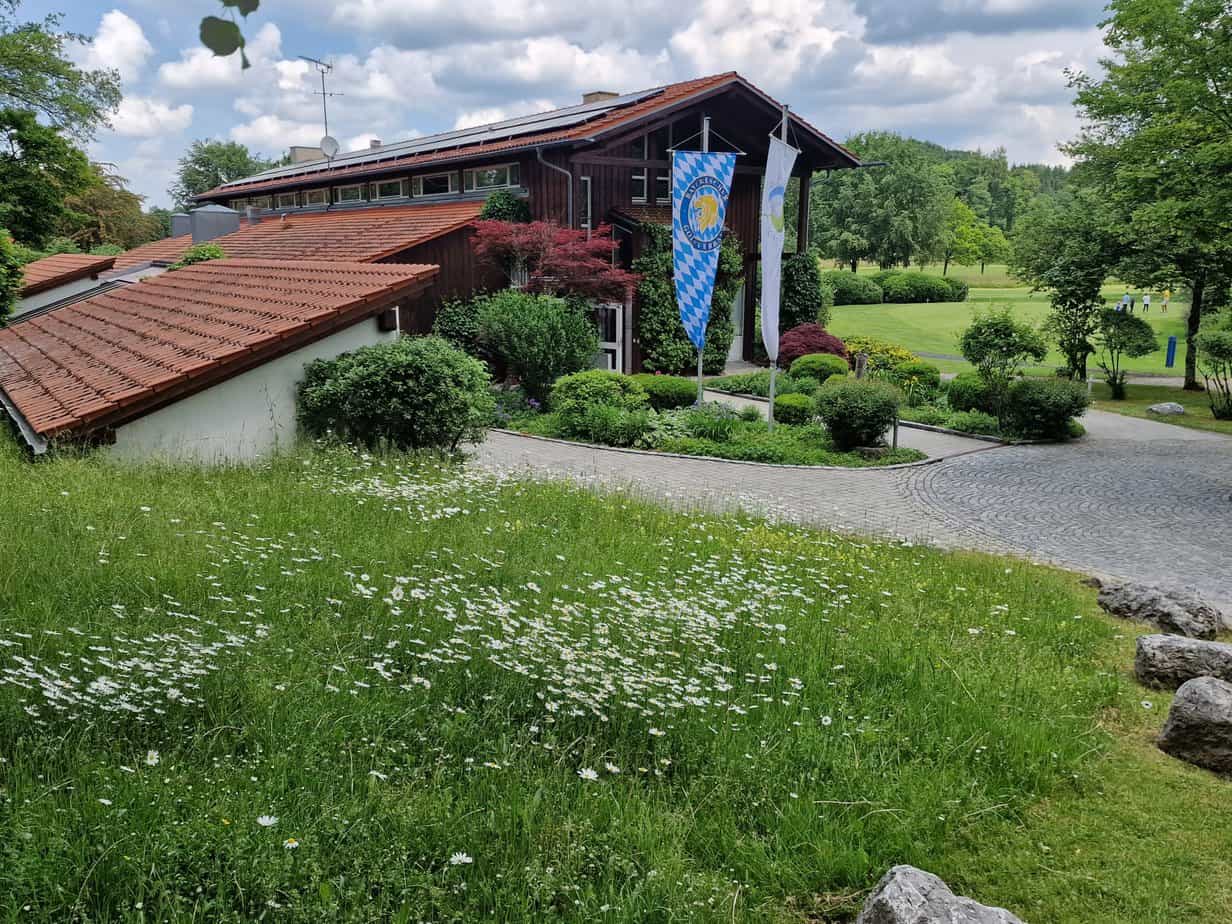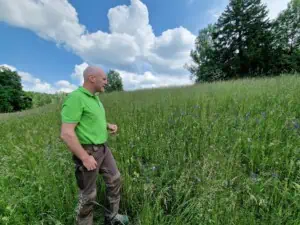GC Hohenpähl:Specialist in the subject of meadows
On the subject of meadow, Stephan Schlierf becomes excited. No wonder, the head greenkeeper at the German GC Hohenpähl has ten hectares of hard rough to manage on the grounds of the 18-hole course in the south of Munich. Driving down the entrance avenue along the golf course, you will immediately see the first species-rich meadows on your right, which line so many of the fairways and greens here. When the pcourse was built in 1988, they were a permanent fixture from the very beginning. They are part of the landscape conservation plan, and the greenkeepers are required to maintain them and, ideally, develop them better.
Emaciation of the stock
Meadow care can be done quickly and without effort, or even with expert knowledge. In the case of GC Hohenpähl, the golfer benefits in many ways from the fact that Stephan Schlierf identifies with the subject. He has zeroed out fertilization of designated areas to keep plant populations as lean as possible. The thinner the grasses, the easier it is to find the balls, the more attractive the meadows are, also in terms of biodiversity. Fat, over-fertilized meadows, on the other hand, usually consist only of dense grass, have many stinging nettles, and make the golfer despair of finding his ball.
Similarly important is correct system of mowing. Schlierf only ever has certain areas mowed on each course, observes strip mowing, and thus ensures that there are always enough stepping stone biotopes for insects and animals to use as they migrate to other habitats on the golf course. Starting June 25, mowing of all meadows is theoretically allowed, but again, the Greenkeeper makes exceptions in order to still provide adequate overwintering support in stalks, panicles, leaves and old flowers during the winter months.
The “species-rich meadow” project repeatedly causes protests on Germany’s golf courses. As a rule, the higher the rough on the side of the fairways, the greater the protests of those golfers who extremely warp their balls. The fairways at GC Hohenpähl are certainly wide enough for the normal golfer, but Stefanie Almer, club manager of the course, nevertheless points out “that we have to start communicating the issue very early on.” Year after year, she informs the membership that the species-rich meadows are not a hobbyist project of the club but a legal requirement. In return, however, the golf course has received plenty of positive feedback from the nature conservation authorities: if you take a look at the diverse species of flowers and grass, you will see that work on biodiversity has been going on here for years.
Frugality in water and fertilizer
Nevertheless, the maintenance of the extensive areas is only the freestyle in Schlierf’s daily work routine. Other issues are also very much in focus for him at the moment. After the EU plans a further tightening of the plant protection product regulation, he tries to make the grasses of the playing fields as resistant as possible to diseases and pests via biological preparations. “The ground is the be-all and end-all” he notes, looking down one of the fairways.
Frugality also applies when it comes to water. The district of Weilheim, where the Hohenpähl golf course is located, like the whole of southern Bavaria, is not suffering from extreme drought such as that experienced in Berlin-Brandenburg. Nevertheless, Stephan Schlierf believes that saving water is the order of the day. “Even in a really dry summer, we get by with 9000 m³ of water,” he sums up. Lush fairway rainfall is not an issue here anyway. On the greens, “I always orient myself to the wettest spots,” Schlierf notes. The moisture content of the greens is determined by probe, and the moisture is distributed precisely with the help of hand waterers.
The quality of the greens has developed positively in view of the maintenance program. “We’ve had increasing teams here over the past two years and very good players coming to train,” Almer notes with satisfaction. More evidence that the correct and quite economical use of resources can have a positive effect on the grasses. Water, Schlierf repeatedly tells golfers, tends to be counterproductive to the condition of the greens when used in excess. Not everything that is nice and green is good.








